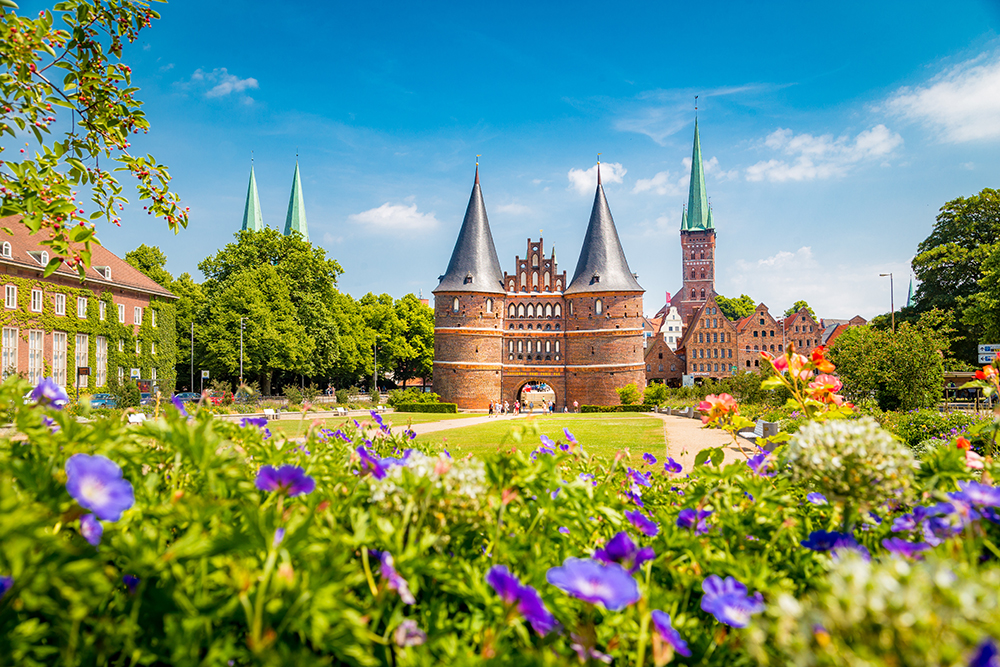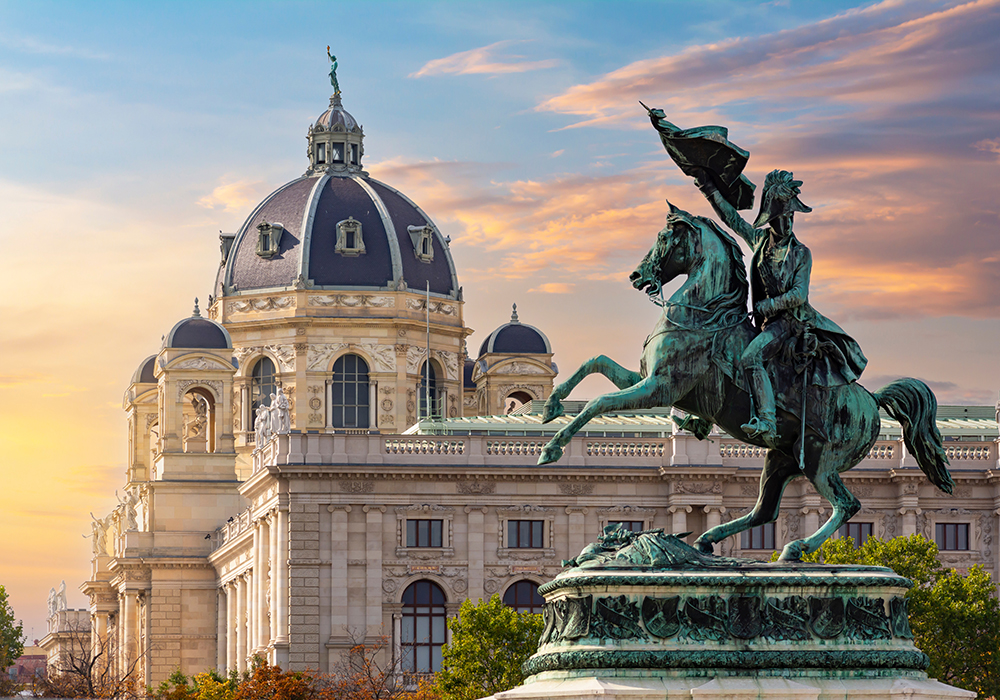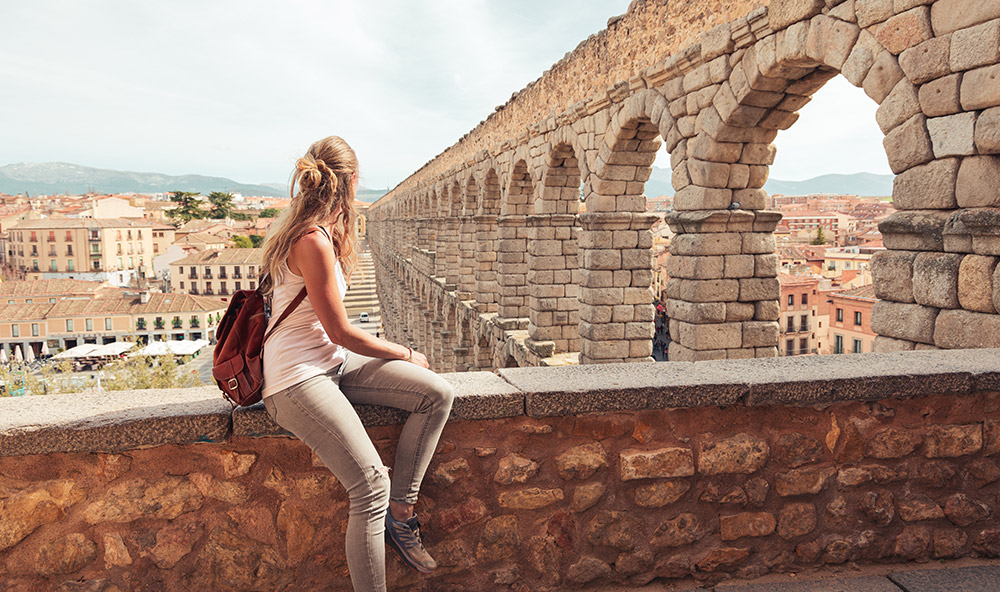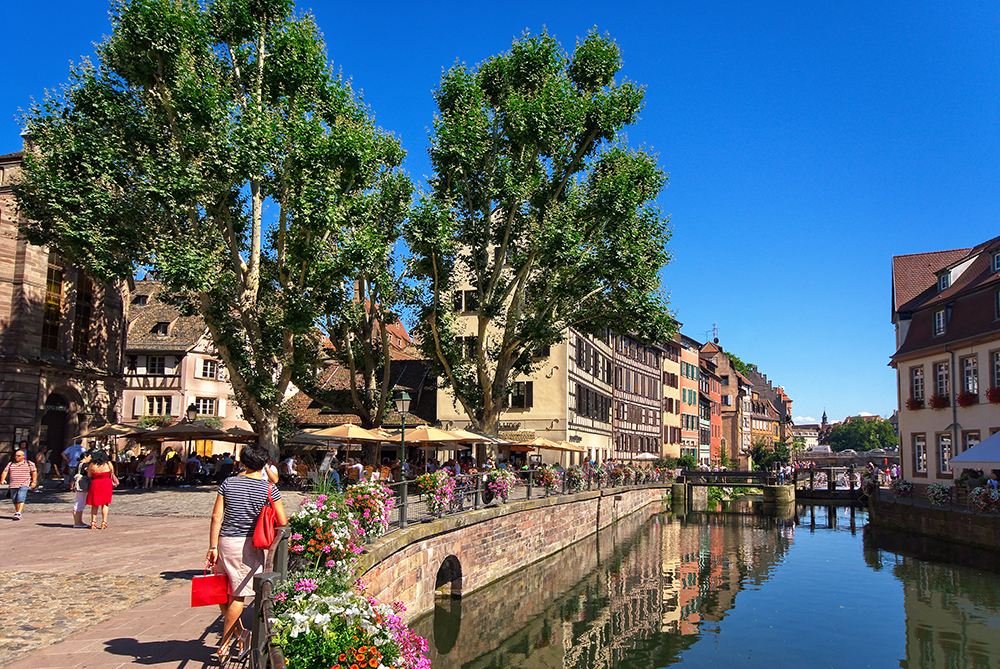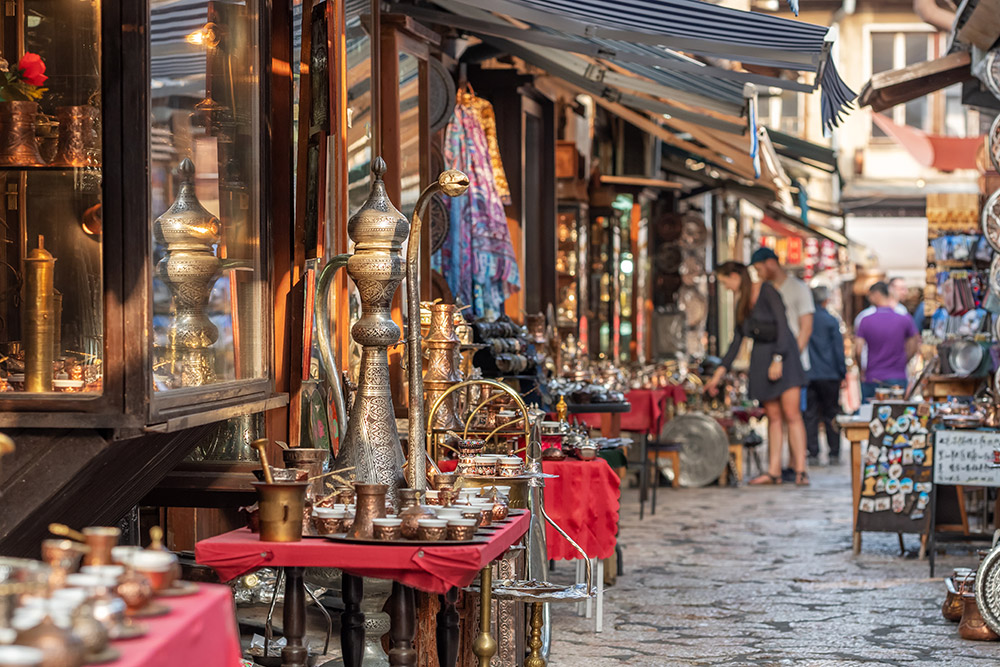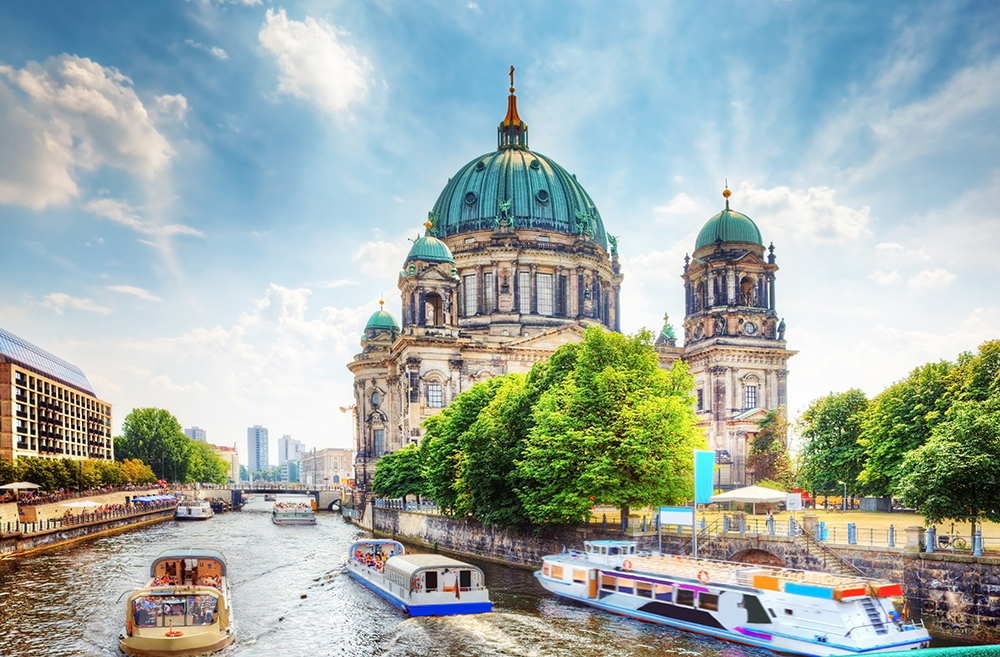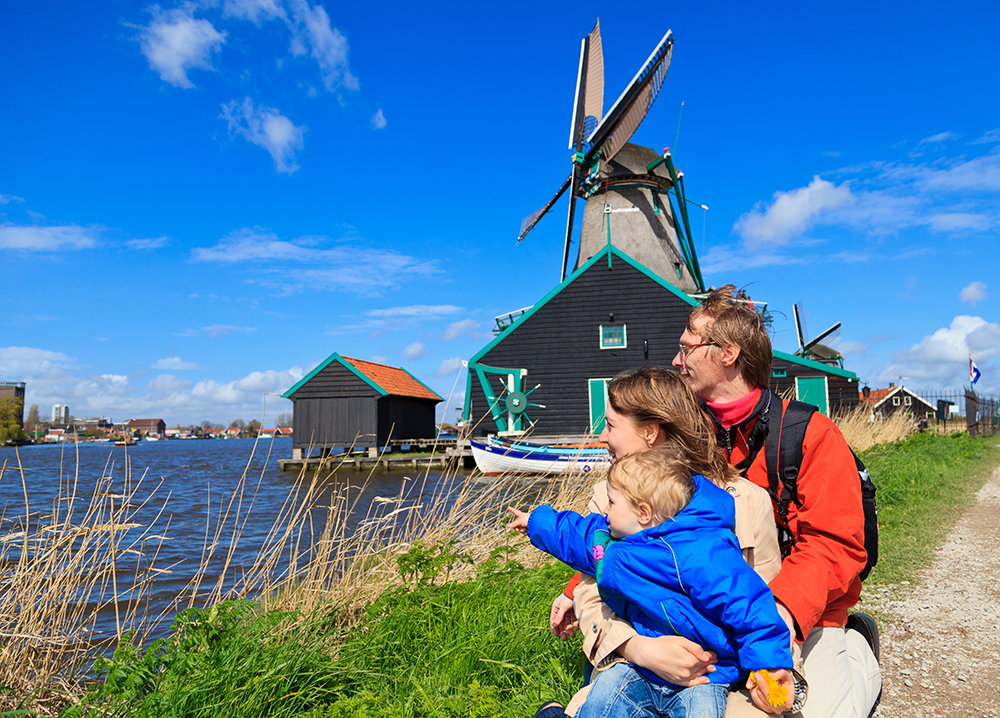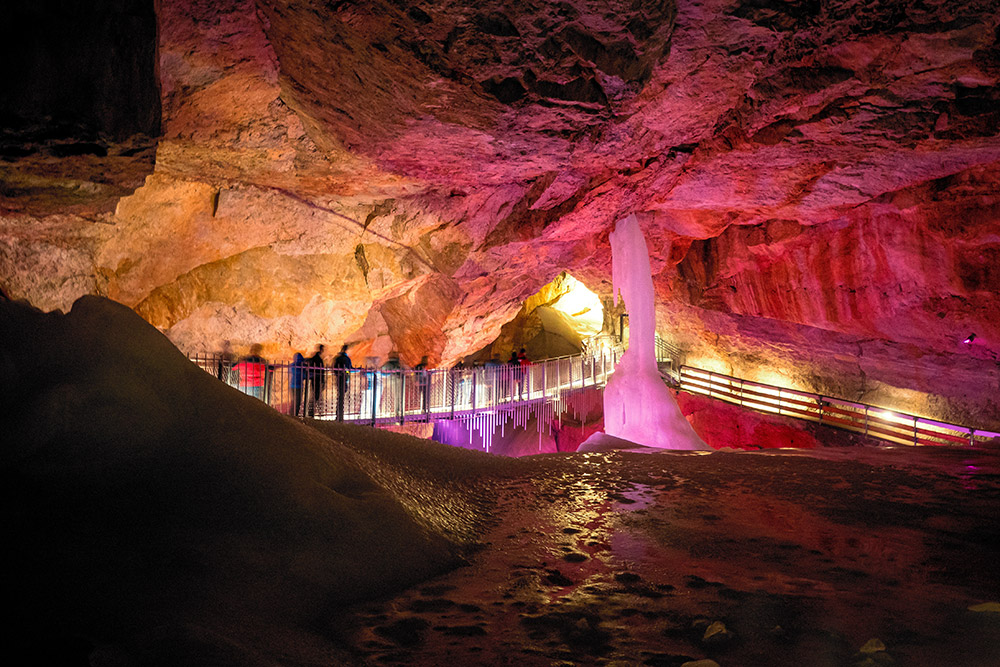Northern Germany boasts breathtaking landscapes, a rich historical tapestry, and a wealth of cultural and artistic treasures. Our suggested tour begins in Berlin, Germany’s dynamic and lively capital. Explore the monumental remnants of the Berlin Wall, a poignant reminder of a pivotal era that left an indelible mark on the world, and discover the city’s museums, such as the Pergamon Museum and the DDR Museum, each presenting diverse narratives.
Popular itinerary for a trip to Northern Germany with a focus on History and Art:
Journeying from Berlin, you’ll discover Dresden, a living testament to the splendors of the Baroque period. Visit the meticulously restored Frauenkirche, rising majestically from its ruins, and the Zwinger Palace, an architectural marvel, that houses art collections reflecting the influence of bygone eras.
In Leipzig, you’ll explore a city steeped in the musical legacy of Johann Sebastian Bach and Felix Mendelssohn. A short distance away is Halle, the hometown of another musical genius, George Frideric Handel, whose legacy is meticulously preserved in the Handel House Museum. Magdeburg, adorned with architectural wonders like its Gothic cathedral, offers a glimpse into medieval art and the impressive complex of Austrian artist Friedensreich Hundertwasser, revealing his vibrant creativity.
The next stop is Hanover, a city of contrasts that blends Baroque elegance and modernity. The tranquil Herrenhausen Gardens, with their meticulously designed grounds, provide a peaceful retreat. Bremen boasts a rich historical maritime heritage, and its iconic statue, Town Musicians of Bremen, stands at its core, as do the City Hall and the Bremen Roland statue.
Continue to Hamburg, a bustling metropolis and central port city, to explore the historic Speicherstadt warehouses, recognized by UNESCO as an architectural wonder. The Elbphilharmonie concert hall, a modern architectural gem, is situated along the city’s waterfront. From there, head to Lübeck, a UNESCO World Heritage site. The grand Holstentor gate and the architectural treasures of the city showcase its dominant history as a former trading powerhouse.
To conclude your journey, we recommend a visit to Schwerin Palace, which invites visitors into a world of imagination and art, and, from there, head back to Berlin.
Days 1 and 2: Berlin
Berlin’s history is marked by turbulence that has not only shaped Germany but has also left an imprint on the world. From the days of the Prussian Empire to the ravages of World War II and the subsequent division during the Cold War, the city’s history is a testament to resilience and renewal. Its rich historical tapestry merges with a dynamic culture, evident in avant-garde art galleries, theaters, and street art that showcase the city’s creative energy and openness to artistic expression. In the realm of music, Berlin’s influence spans from classical composers like Bach and Mendelssohn to the emergence of electronic music from the city’s underground clubs in the late 20th century.
Berlin boasts an abundance of attractions that draw tourists from around the world, including remnants of the Berlin Wall, Checkpoint Charlie, Brandenburg Gate symbolizing unity and hope, and Museum Island, a UNESCO World Heritage site housing internationally renowned museums such as the Pergamon Museum and the Altes Museum. Each museum displays a vast array of ancient artifacts and art treasures. The Reichstag building, with its iconic glass dome, offers panoramic views and insights into German politics.
Berlin’s current music scene is dynamic, ranging from classical to electronic and everything in between. Its musical legacy is exemplified by impressive venues like the Berlin Philharmonic, known for its exceptional acoustics, and internationally acclaimed opera houses such as Deutsche Oper Berlin and Staatsoper Unter den Linden, and the city is home to numerous clubs, concert halls, and festivals.
Berlin’s markets, including the eclectic Turkish market at Maybachufer and the historically charming Winterfeldtmarkt in Schöneberg, are lively centers of culture, fresh produce, and artisanal crafts, reflecting the city’s diverse communities.
Berlin’s culinary landscape is as diverse as its population, offering tasty options from traditional German cuisine like the famous currywurst or schnitzel to international dishes from all corners of the globe. The city’s street food scene, bustling food markets, and Michelin-starred restaurants make dining in Berlin an adventure in itself.
Spend the first two nights in Berlin.
Days 3 and 4: Dresden
After renting a car, start your journey to Dresden via Highway 13, a distance of approximately 124 miles. It is advisable to select a centrally located hotel with parking for a two-night stay.
Often hailed as the “Florence on the Elbe,” Dresden emanates a distinctive fusion of history and artistic richness. The city’s history transports visitors through the era of the Saxon kings, a cultural heritage that spans from the Baroque period to the harsh destruction during World War II. Dresden has been meticulously reconstructed, restoring architectural treasures such as the Frauenkirche, the Dresden Zwinger showcasing an unparalleled collection of European art from the Renaissance to the Baroque, the Albertinum Museum featuring modern art, and the Grünes Gewölbe Museum housing a magnificent collection of treasures, including the famous Green Diamond of Dresden.
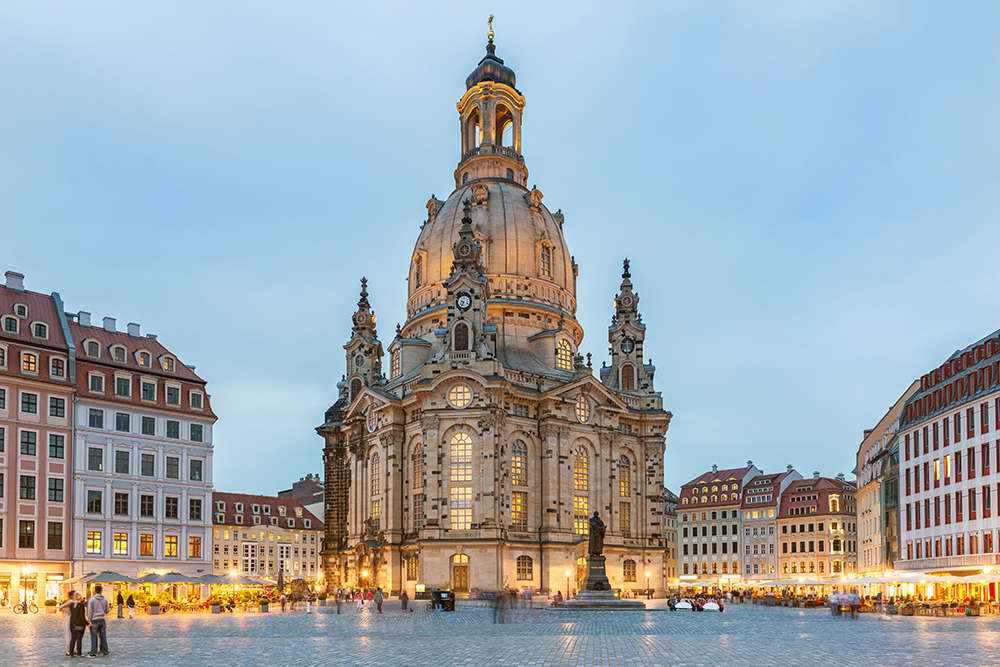
The Semperoper Dresden opera house, a central pillar of the city’s musical legacy, is closely tied to musical giants such as Richard Wagner and Carl Maria von Weber, offering a broad repertoire of classical works. Simultaneously, the Dresden Philharmonic Orchestra, housed in the Kulturpalast, performs symphonic masterpieces, contributing to the vibrant musical fabric of Dresden.
The Striezelmarkt is one of Germany’s oldest Christmas markets, offering a delightful array of handcrafts, treats, and festive cheer. Beyond the Christmas season, markets like Neustädter Gelichter and Wochenmarkt am Albertplatz offer a glimpse into the local culture and culinary delights of the city, featuring traditional Saxon dishes such as slow-cooked roast beef (Sauerbraten) and the classic fruitcake known as Dresdner Stollen.
At the end of the second day in Dresden, head to Leipzig via Highways 4 and 14, a distance of approximately 75 miles.
Spend night #3 in Dresden and night #4 in Leipzig.
Day 5: Leipzig
Leipzig, often dubbed the “City of Music,” thrived as a prominent trading center during the Middle Ages and later evolved into an intellectual hub, nurturing the intellectual pursuits of great thinkers like Goethe, Schiller, and Mendelssohn. Leipzig’s musical legacy is closely associated with Johann Sebastian Bach, who served as a musician at St. Thomas Church. The Gewandhaus Orchestra, among the world’s oldest, continues Leipzig’s musical tradition by presenting timeless masterpieces that have echoed through its streets for centuries.
The historic marketplace, Markt, is one of the city’s central focal points. Surrounded by architectural marvels like the Old City Hall and Naschmarkt, visitors will get a glimpse into the city’s medieval history. The Monument to the Battle of the Nations commemorates Napoleon’s wars, while the lively Karl-Liebknecht-Straße Street, lined with cafes, boutiques, and galleries, showcases the city’s contemporary cultural diversity.
The Bach Museum explores the life and contributions of Johann Sebastian Bach, displaying original manuscripts and musical instruments. The Museum der bildenden Künste features an extensive collection spanning various eras, from medieval art to contemporary masterpieces. The Grassi Museum complex, encompassing the Applied Arts Museum, Ethnography Museum, and Musical Instrument Museum, provides a broad cultural experience.
Leipzig’s renowned Gewandhaus concert hall upholds a musical tradition with roots dating back centuries. The Leipzig Opera, housed in a magnificent building near Augustusplatz, presents opera performances and ballets. The weekly Markt am Königshausen and the Auerbachs Keller market exhibit local products, handmade crafts, and culinary delights such as Leipziger Allerlei vegetable stew and Leipziger Lerche pastries, alongside a variety of international cuisines.
Spend the night in Leipzig.
Day 6: Halle
In the morning, set out for the city of Halle, a 28-mile drive via Highways 2 and 14. Halle boasts a rich history and takes pride in its diverse cultural heritage, interwoven with significant milestones.
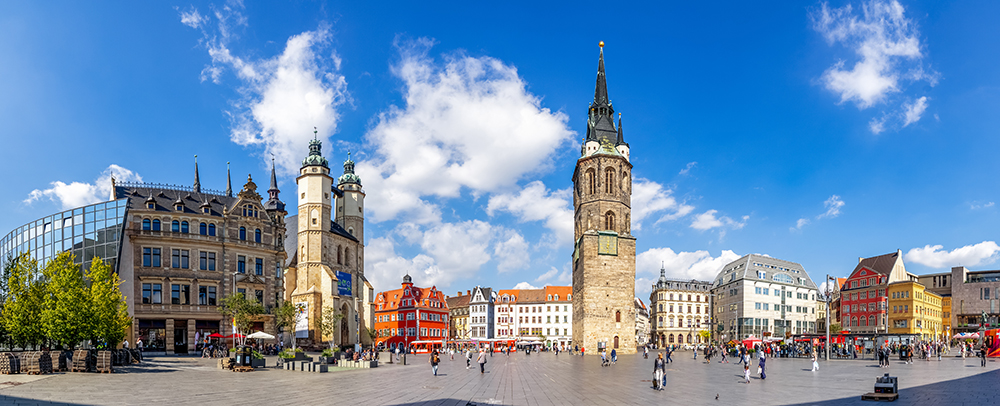
With a history spanning over a millennium, the city was home to composer George Frideric Handel and philosopher Friedrich Nietzsche. The Marktkirche Unser Lieben Frauen is an impressive Gothic style church that houses many historical treasures. The State Museum of Prehistory, Landesmuseum für Vorgeschichte, displays archaeological treasures from prehistoric periods, while the Moritzburg Art Museum showcases a diverse collection from medieval art to contemporary works. The Händel-Halle concert hall, named after the composer, hosts musical performances that resonate with the city’s musical legacy.
Towards evening, head to Magdeburg, located on Highway 14, approximately 56 miles away, to spend the night.
Day 7: Magdeburg and Hanover
Magdeburg is one of Germany’s oldest cities, proudly bearing witness to its history from the Holy Roman Empire to the era of the Hanseatic League. Dominating the skyline is Magdeburg Cathedral, an impressive example of Gothic architecture, and the Grüne Zitadelle, an architectural masterpiece designed by Hundertwasser. Artistic expressions thrive in Magdeburg, evident in galleries and public art installations that enrich the city’s cultural mosaic. Elbauenpark, a spacious park along the Elbe River, offers leisure activities and scenic views, making it a popular destination for both locals and tourists. The Kulturhistorisches Museum traces the city’s evolution from ancient times to the present, while the Kloster Unser Lieben Frauen Art Museum showcases a diverse collection of art from medieval to modern times. Magdeburg’s cuisine features local delights such as Magdeburger Reitschuster (beef stew) and Halberstädter Würstchen sausages.
Later in the day, travel to the vibrant city of Hanover via Highway 2, a distance of approximately 93 miles, to spend the night.
Day 8: Hanover
Hanover, the capital of Lower Saxony, thrived under the rule of the House of Hanover, weaving its destiny with that of the English royal family. Its cultural landscape is a blend of historical landmarks and a lively contemporary lifestyle. The architectural diversity includes the Herrenhausen Palace and Royal Gardens, a Baroque masterpiece with breathtaking landscape architecture. The New City Hall, an architectural marvel crowned with an impressive dome, offers a sweeping view of the city from its observation deck. The Lower Saxony State Museum (Niedersächsisches Landesmuseum) showcases archaeological artifacts, art, and exhibitions, providing a comprehensive exploration of the region’s history. The Sprengel Museum, home to collections of modern and contemporary art, exhibits works by acclaimed artists like Picasso, Klee, and Schwitters.
Hanover proudly bears the UNESCO designation of City of Music, showcasing the Royal State Opera (Staatsoper Hannover) and Theater am Aegi, presenting a wide range of performances, from classical operas to contemporary theater productions. The NDR Radiophilharmonie enhances the city’s cultural ambiance with classical concerts and symphonic performances.
Indulge in the local airy dessert, Hannoversche Welfenspeise, adorned in the colors of the Prussian flag and savor the region’s distinctive cuisine through the signature dish of Grünkohl mit Pinkel (kale with sausage).
Spend the night in Hanover.
Day 9: Bremen
In the morning, follow Highways 7 and 27 for approximately 80 miles to reach the city of Bremen. Known for its maritime heritage, Bremen is celebrated for its deep historical roots and cultural importance. The city’s Hanseatic trading legacy is vividly displayed in its well-preserved maritime-medieval architecture. Both the Schnoor district and the historic City Hall, Bremer Rathaus, are UNESCO World Heritage sites. Proudly gracing the city center is the iconic Bremen Town Musicians statue, inspired by the Brothers Grimm folktale. Böttcherstraße, with its expressive architecture and art, provides an enchanting journey through history and creativity. Along the Weser River, the Schlachte promenade offers a vibrant ambiance with charming cafes and restaurants.
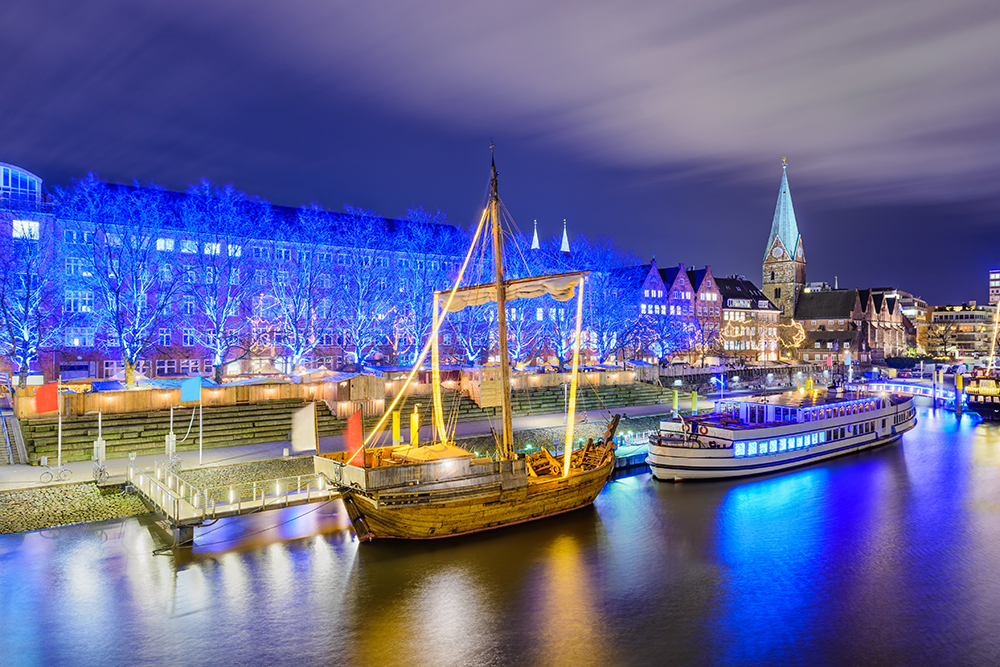
Bremen’s museums showcase its diverse heritage. The Übersee Museum exhibits cultures from around the world, while the Kunsthalle Bremen Art Museum presents an impressive collection spanning from medieval to contemporary art, featuring works by renowned artists such as Rembrandt and Picasso. The Glocke Concert Hall, known for its exceptional acoustics, hosts concerts and classical performances. The Bremen Theater offers a wide range of theatrical productions, enriching the city’s cultural offerings.
Bremen’s culinary scene includes local specialties like Bremer Knipp sausages and Bremer Klaben fruit bread, and the city’s restaurants and taverns serve a blend of regional and international flavors.
After exploring Bremen, travel along Highways 27 and 1 for about 75 miles until you reach the city of Hamburg.
Spend the night in Hamburg.
Day 10: Hamburg
The vibrant history of Hamburg, a dynamic port city, has played a pivotal role in shaping its identity and nurturing a rich cultural landscape from the trendy St. Pauli district to the elegant Alster area. The city boasts many famous landmarks, ranging from the UNESCO-acclaimed Speicherstadt, a charming warehouse district adorned with red-brick buildings and scenic canals, to the contemporary architectural masterpiece, Elbphilharmonie, renowned for hosting world-class musical performances and providing sweeping panoramic views of the city. The historic St. Michaelis Church and the bustling harbor region, home to attractions like Miniatur Wunderland, captivate visitors with their charm and historical significance.
Hamburg’s museums offer a diverse cultural experience. The Kunsthalle Hamburg showcases a broad collection of art, spanning from medieval times to contemporary works. The International Maritime Museum provides insights into the city’s maritime history, displaying nautical artifacts and ship models. The Elbphilharmonie concert hall, a magnificent creation by Swiss architects Herzog & de Meuron, hosts globally acclaimed orchestras and musicians. Catching an evening performance is highly recommended. Nightlife seekers can enjoy live shows at venues like Gruenspan and Molotow.
The historic Fischmarkt fish market and the eclectic Isemarkt market present a variety of fresh produce, local specialties, and a lively atmosphere, reflecting the city’s diverse cultural influences. Culinary enthusiasts can savor traditional Northern German cuisine, such as Labskaus, a dish made with corned beef, potatoes, onions, and often beetroot, and Finkenwerder Scholle, a stuffed traditional dish. Street food stalls and trendy restaurants offer a diverse culinary experience.
Spend the night in Hamburg.
Day 11: Lübeck and Schwerin
In the morning, follow Highways 24 and 1 for approximately 43 miles to the city of Lübeck. Lübeck, situated on the Baltic Sea coast, is a testament to medieval splendor and the glory of the Hanseatic League. Its history as the “Queen of the Hanseatic League” is reflected in the magnificent and well-preserved medieval architecture at various sites, including the impressive Holstentor gate and the historic Old Town (Altstadt), a UNESCO World Heritage site. The narrow streets of the Old Town lead to historical landmarks like the Marienkirche with its astronomical clock and scenic views along the Trave River. In the confectionery shops, you’ll have the opportunity to savor the local specialty – marzipan.
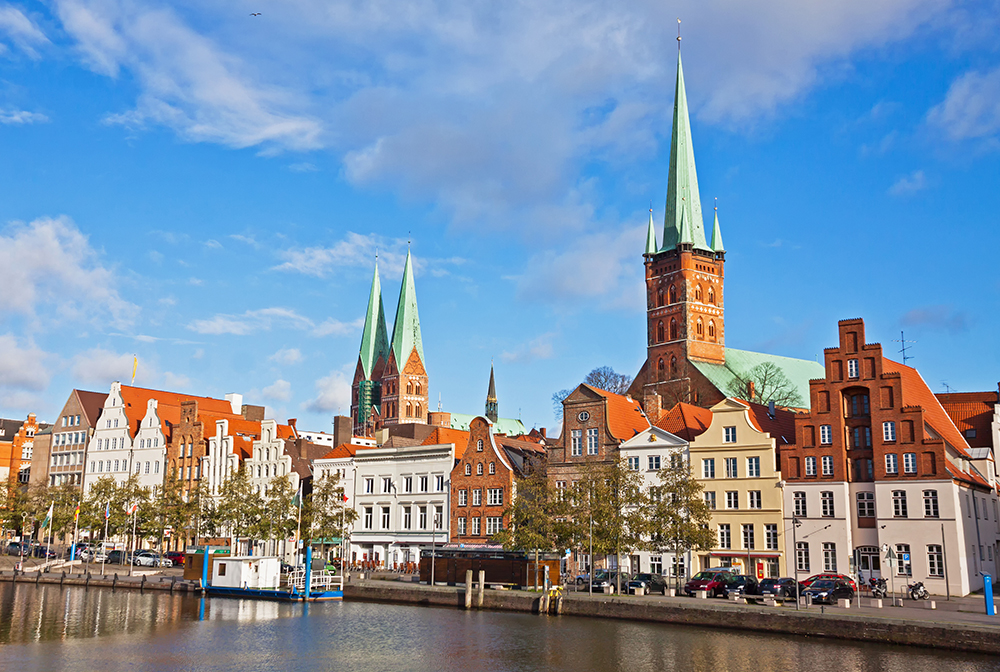
After exploring the city, continue along Highways 20 and 103L for about 43 miles to the picturesque city of Schwerin, nestled between scenic lakes and beautiful landscapes. Visit the legendary Schwerin Palace (Schweriner Schloss), located on an island in a lake, as well as its magnificent gardens.
Spend the night in Schwerin.
Day 12: Schwerin to Berlin
If time permits in the morning, take the opportunity to wander through the charming Old Town of Schwerin. Following your visit, start your drive back toward Berlin, traveling along Highways 321, 14, and 24 for approximately 137 miles. Along the way, consider making a short stop to explore the historic center and fortress of Wittstock if time allows.
Spend the night in Berlin.


